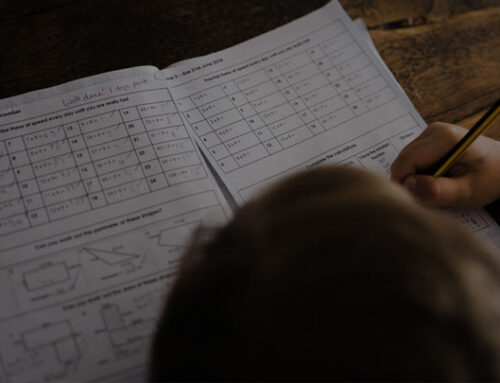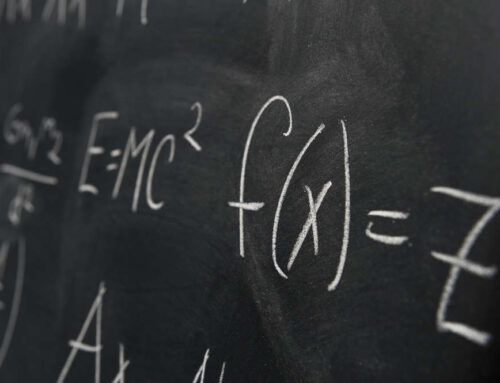
MYTH #1: APTITUDE FOR MATH IS INBORN.
This belief is the most natural in the world. After all, some people just are more talented at some things (music and athletics come to mind) and to some degree, it seems that these talents must be in their genes. You’re born with a math gene, either you get it or you don’t.
But consider: to generalize from “three spoons, three rocks, three flowers” – to the number “three” – is an extraordinary feat of abstraction, yet every one of us accomplished this when we were mere toddlers! Mathematics is indeed inborn, but it is inborn in all of us. It is a human trait, shared by the entire race. Reasoning with abstract ideas is the province of every child, every woman, every man. Having a special genetic make-up is no more necessary for success in this activity than being Mozart is necessary to humming a tune.
Ask your math teacher or professor if he or she became a mathematician as a consequence of having a special brain. (Be sure to keep a straight face when you do this.) Almost certainly, after the laughter has subsided, it will turn out that a parent or teacher was responsible for helping your instructor discover the beauty in mathematics, and the rewards it holds for the student – and decidedly not a special brain.
MYTH #2: TO BE GOOD AT MATH YOU HAVE TO BE GOOD AT CALCULATING.
Some people count on their fingers. Invariably, they feel somewhat ashamed about it, and try to do it furtively. But this is ridiculous. Why shouldn’t you count on your fingers? What else is a Chinese abacus, but a sophisticated version of counting on your fingers? Yet people accomplished at using the abacus can out-perform anyone who calculates figures mentally. serious message in this: being a wiz at figures is not the mark of success in mathematics.
Modern mathematics is a science of ideas, not an exercise in the calculation. It is a standing joke that mathematicians can’t do arithmetic reliably, and I often admonish my students to check my calculations on the chalkboard because I’m sure to get them wrong if they don’t. This bears emphasis: a pocket calculator has no knowledge, no insight, no understanding – yet it is better at addition and subtraction than any human will ever be. And who would prefer being a pocket calculator to being a human?
This myth is largely due to the methods of teaching discussed above, which emphasize finding solutions by rote. Indeed, many people suppose that a professional mathematician’s research involves something like doing long division to more and more decimal places, an image that makes mathematicians smile sadly. New mathematical ideas – the object of research – are precisely that. Ideas. And ideas are something we can all relate to. That’s what makes us people to begin with.
MYTH #3: MATH REQUIRES LOGIC, NOT CREATIVITY.
The grain of truth in this myth is that, of course, math does require logic. But what does this mean? It means that we want things to make sense. We don’t want our equations to assert that 1 is equal to 2. This is no different from any other field of human endeavor, in which we want our results and propositions to be meaningful – and they can’t be meaningful if they do not jive with the principles of logic that are common to all mankind.
MYTH #4: IN MATH, WHAT’S IMPORTANT IS GETTING THE RIGHT ANSWER.
“The most powerful learning experiences often result from making mistakes”. I usually address my students with the above phrase after handing out marked papers, tests, and exams. I then provide time for my students to carefully analyze their errors. I also ask them to keep a running record/journal of the patterns of their errors. Understanding how and where you go wrong will lead to enhanced learning and improved grades – a habit often developed by strong math students. It’s not unlike me to develop my next test based on a variety of student errors!
How often have you looked over your marked paper and analyzed your errors? When doing so, how many times have you almost immediately realized exactly where you went wrong and wished that only you had caught that error prior to submitting your paper to your instructor? Or, if not, how often have you looked closely to see where you went wrong and worked on the problem for the correct solution only to have one of those ‘A Ha’ moments? ‘A Ha’ moment or the sudden enlightening moment resulting from the newly discovered understanding of the misconceived error usually means a breakthrough in learning, which often means that you’ll rarely repeat that error again.
Instructors of mathematics often look for those moments when they are teaching new concepts in mathematics; those moments result in success. Success from previous errors isn’t usually due to the memorization of a rule or pattern or formula, rather, it stems from a deeper understanding of ‘why’ instead of ‘how’ the problem was resolved. When we understand the ‘whys’ behind a mathematical concept rather than the ‘hows’, we often have a better and deeper understanding of the specific concept.
MYTH #5: MEN ARE NATURALLY BETTER THAN WOMEN AT MATHEMATICAL THINKING.
If there is even a ghost of a remnant of suspicion in your mind about gender making a whit difference in students’ mathematics aptitude, slay the beast at once. Special vigilance is required when it comes to this myth because it can find insidious ways to affect one’s attitude without ever drawing attention to itself. For instance, I’ve had female students confide to me that – although of course, they do not believe in a gender gap when it comes to ability – still it seems to them a little unfeminine to be good at math. There is no basis for such a belief, and in fact, a sociological study several years ago found that female mathematicians are, on average, slightly more feminine than their non-mathematician counterparts.
Sadly, the legacy of generations of gender bias, like our legacy of racial bias, continues to shade many people’s outlooks, often without their even being aware of it. It is every student’s, parent’s, and educator’s duty to be on the lookout for this error of thought and to combat it with reason and understanding wherever and however it may surface.
MYTH #6: THERE IS ONLY ONE WAY TO DO MATH
There are a variety of ways to solve math problems and a variety of tools to assist with the process.
Think of the process you use when you try to determine how many pieces of pizza 5 people will get with 2 and a half 6 slice pizzas.
Some of you will visualize the pizzas, some will add the total number of slices and divide by 5. Does anyone actually write the algorithm? Not likely! There are a variety of ways to arrive at the solution, and everyone uses their own learning style when solving the problem.
MYTH #7: STUDENTS DON’T LEARN THE BASICS ANYMORE BECAUSE OF A RELIANCE ON CALCULATORS AND COMPUTERS
Research at this time indicates that calculators do not have a negative impact on achievement. The calculator is a powerful teaching tool when used appropriately.
Most teachers focus on the effective use of a calculator. Students are still required to know what they need to key into the calculator to solve the problem.
MYTH #8: YOU NEED TO MEMORIZE A LOT OF FACTS, RULES, AND FORMULAS TO BE GOOD AT MATH
As stated earlier, there’s more than one way to solve a problem. Memorizing procedures is not as effective as conceptually understanding concepts. For instance, memorizing the fact that 9×9 is not as important as understanding that 9×9 is 9 groups of 9. Applying thinking skills and creative thought lead to a better understanding of math. Signs of understanding include those “Aha” moments! The most important aspect of learning math is understanding.
Ask yourself after solving a math problem: are you applying a series of memorized steps/procedures, or do you really ‘understand’ how and why the procedure works.
Answer the questions: How do you know it’s right? Is there more than one way to solve this problem? When questions like this are answered, you’re on your way to becoming a better math problem solver.
MYTH #9: KEEP GIVING MORE DRILL AND REPETITION QUESTIONS UNTIL THE STUDENT GETS IT
Find another way to teach or explain the concept. All too often, students receive worksheets with drills and repetition. This only leads to overkill and negative math attitudes!
When a concept isn’t understood, it’s time to find another method of teaching it. No new learning has ever occurred as a result of repetition and drill. Negative attitudes toward math are usually the result of the overuse of worksheets.



